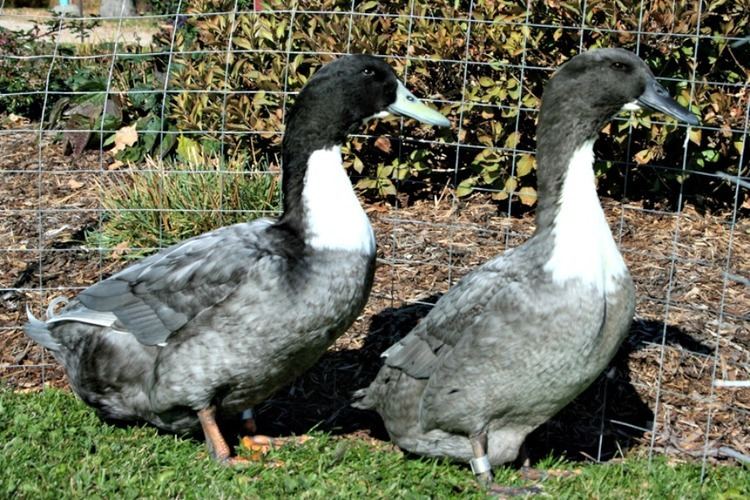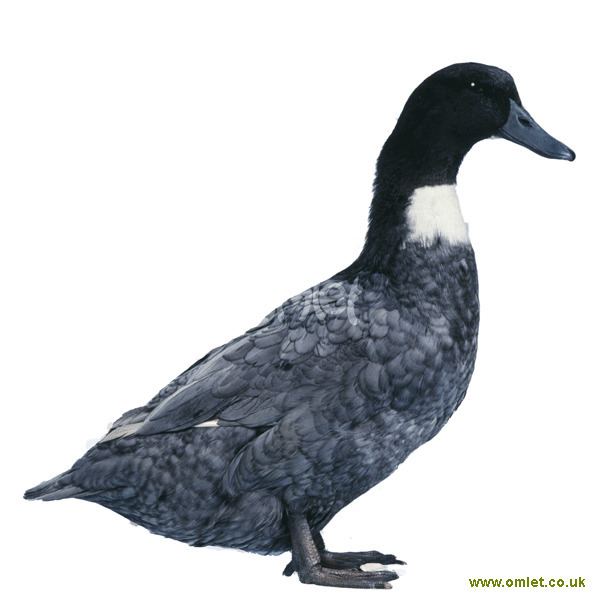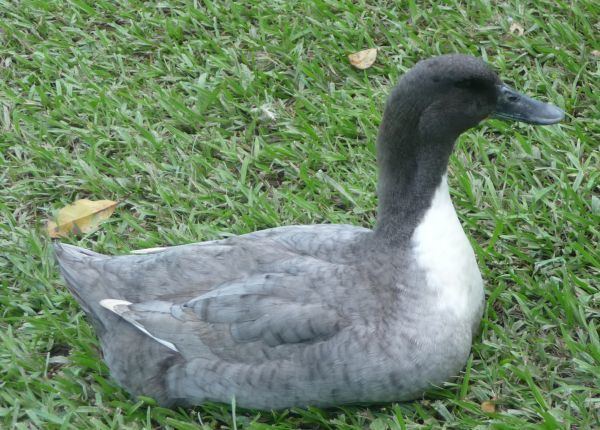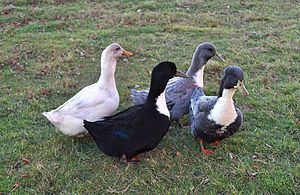Conservation status FAO (2007): critical APA Medium Duck Origin Sweden Rank Breed | Country of origin Sweden PCGB Heavy Higher classification Domestic duck | |
 | ||
Other names Swedish: Svensk blå ankaBlue Swedish Weight Male: 3–4 kgFemale: 2.5–3.5 kg Similar Cayuga duck, Khaki Campbell, Welsh Harlequin, Ancona duck, Aylesbury duck | ||
The Swedish Blue (Swedish: Svensk blå anka) or Blue Swedish is a breed of domesticated duck which emerged during the 19th century in Swedish Pomerania, near the Baltic shores of what is now modern Germany and Poland. Within the American Standard of Perfection, the "blue" is the only variety of the breed "Swedish".
Contents

Description

The Swedish Blue is a medium-sized bird: the male weighs between 3–4 kg and the female usually weighs 2.5–3.5 kg. Swedish ducks are regularly compared to the body type of Cayugas and Orpingtons, however Swedish should have shorter bodies with more width compared to what is seen in those two breeds. Blue Swedish have medium, oval-shaped heads. Color should be a consistent blue-slate with darker lacing around the border of each feather. Generally, the drakes will be darker than the females. The only part of the birds that is not some variety of blue is the white, heart-shaped bib found on the breast, extending up the front of the neck terminating towards the mandible of the bird. Swedish Blue ducks are very calm birds and make good beginner's ducks. They produce 100 eggs per year of 80–90 g weight. They love to free range and will go broody.
Genetics
The color of Swedish Blue ducks is due to heterozygosity in a color gene. If a Swedish Blue duck and drake breed, the young are the usual 25% / 50% / 25% ratio in:

Distribution
The Swedish Blue is a relatively unpopular breed of duck. The population of Swedish blue ducks in Sweden consists of only 148 breeding birds; its conservation status world-wide was listed as "critical" by the Food and Agriculture Organization of the United Nations in 2007 and in 2014 was listed as "endangered-maintained" in Sweden. No data is reported from Ireland, the only other country reporting the breed. It is listed as "watch" by the American Livestock Breeds Conservancy. The Blue Swedish is not a popular exhibition breed either. Specifics on wing color make the breed extremely challenging to perfect and often discourages breeders and hobbyists from owning the breed.
